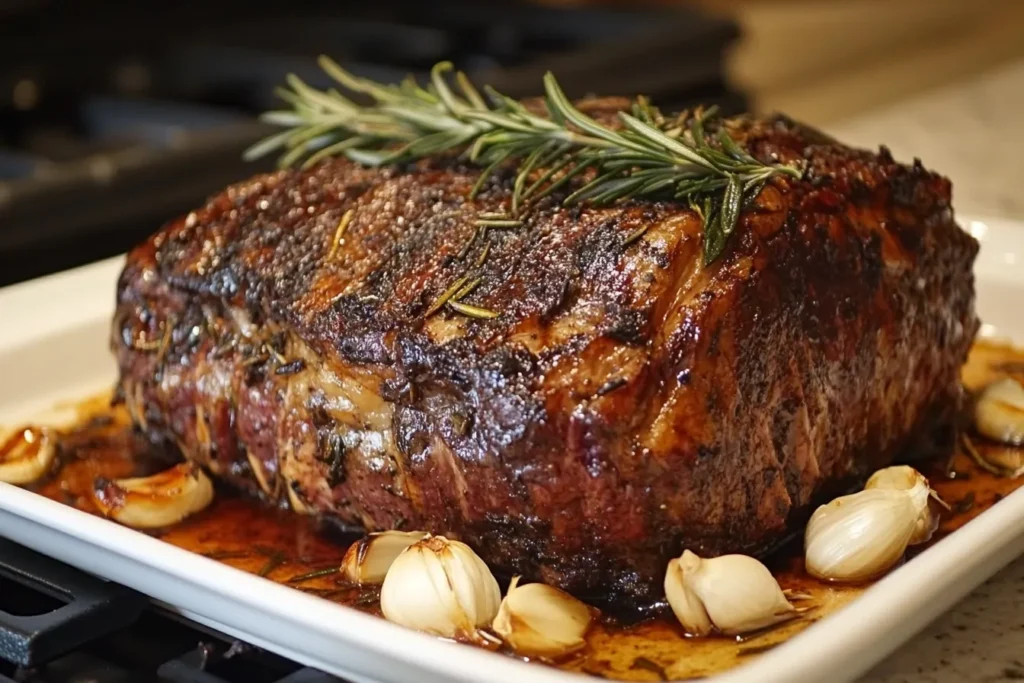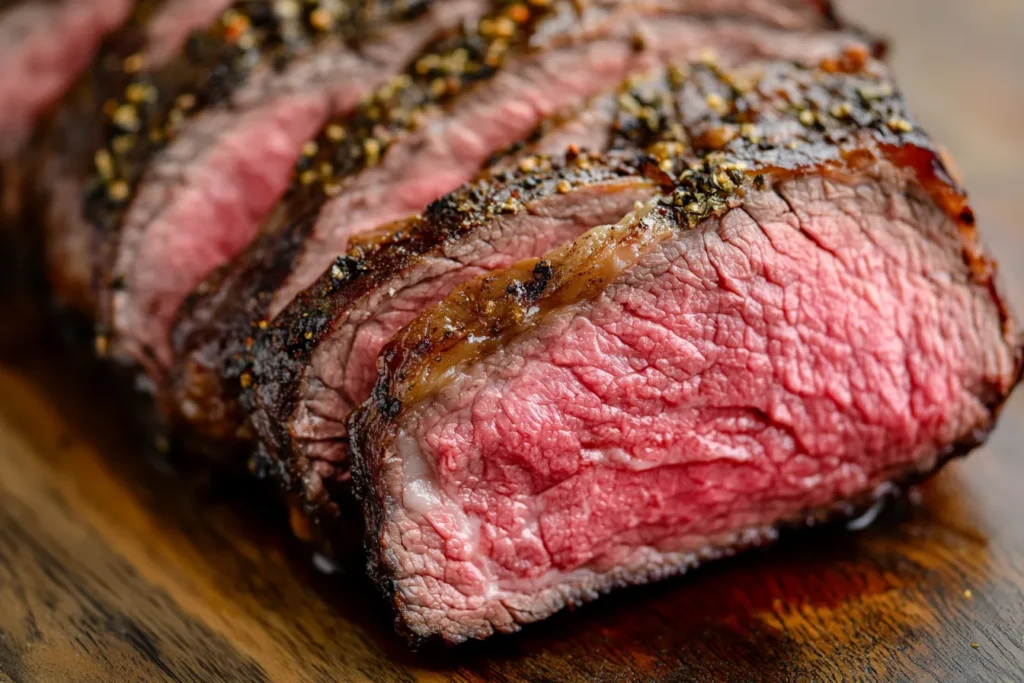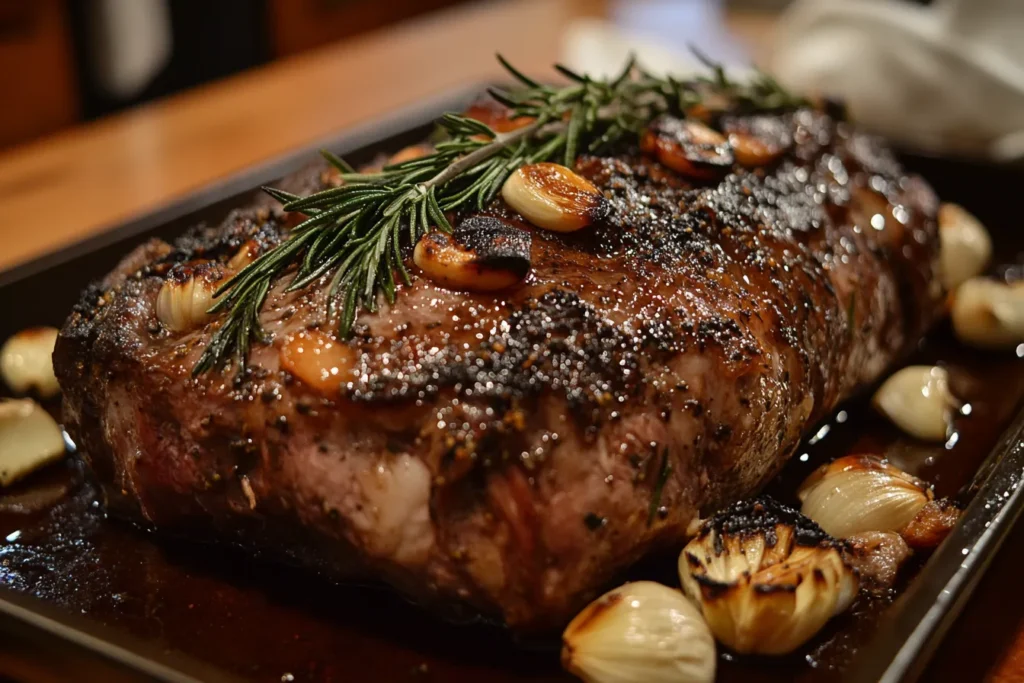Table of Contents
Is a ribeye roast the same as prime rib? This is a question many home cooks ponder when planning a special occasion dinner. Understanding the nuances between these two cuts of beef is crucial for achieving culinary success (Is a ribeye roast the same as prime rib?).
Unveiling the Mystery: Is a Ribeye Roast the Same as Prime Rib?
Is a ribeye roast the same as prime rib? The answer is both yes and no. Confusing, right? Let’s break it down. Both cuts come from the rib section of the cow. The “prime rib” refers to a specific cooking method and the overall primal cut. It’s also sometimes referred to as a standing rib roast. Ribeye roast generally refers to the same cut, but trimmed and sometimes boneless.
Think of it this way: all prime rib is, in essence, a ribeye roast, but not all ribeye roasts are sold or prepared as “prime rib.” Furthermore, the USDA grades beef (Prime, Choice, Select, etc.). A true “prime” rib roast would need to earn that “Prime” grade (Is a ribeye roast the same as prime rib?).
Bone-In vs. Boneless: A Key Difference
The most obvious difference lies in the bones. Prime rib, traditionally, is a bone-in roast. The bones impart flavor during cooking and help keep the roast moist. A ribeye roast, conversely, can be either bone-in or boneless. Boneless ribeye roasts are often easier to carve. However, some argue they lack the depth of flavor found in bone-in prime rib (Is a ribeye roast the same as prime rib?).

Marbling and Flavor: The Heart of the Matter
Both prime rib and ribeye roasts are known for their rich marbling. Marbling refers to the streaks of fat within the muscle. This fat renders during cooking, resulting in a juicy and flavorful roast. However, the amount of marbling can vary depending on the grade of beef. Prime grade will have the most marbling, followed by Choice, and then Select. Therefore, selecting a roast with ample marbling is crucial for achieving optimal flavor and tenderness (Is a ribeye roast the same as prime rib?).
Trimming and Preparation: Setting the Stage
The way the roast is trimmed can also affect its identity. Prime rib is typically sold with a thick fat cap. This fat cap bastes the roast as it cooks, adding flavor and moisture. Ribeye roasts, on the other hand, may have the fat cap trimmed down. Some butchers even remove it entirely. The trimming affects the final flavor. Therefore, consider this when choosing your roast.
The Ultimate Guide to Cooking a Ribeye Roast
Regardless of whether you call it prime rib or ribeye roast, the cooking method is paramount. Mastering the art of roasting this cut of beef will impress your family. It will also impress any guests (Is a ribeye roast the same as prime rib?).
Selecting Your Roast: A Crucial First Step
Start by choosing a high-quality roast. Look for ample marbling and a vibrant red color. Consider whether you prefer bone-in or boneless. Bone-in roasts offer more flavor, while boneless roasts are easier to carve. Moreover, think about the size of the roast. A good rule of thumb is to allow about ½ pound per person for bone-in roasts and ⅓ pound per person for boneless roasts.

Preparing Your Roast: Seasoning and Resting
Before cooking, generously season the roast with salt, pepper, and any other herbs or spices you desire. Garlic powder, onion powder, and dried rosemary are popular choices. Allow the roast to sit at room temperature for at least an hour before cooking. This allows for more even cooking. This is because the internal temperature will be more even at the start (Is a ribeye roast the same as prime rib?).
The Searing Debate: To Sear or Not to Sear?
Searing the roast before cooking is a topic of debate among chefs. Searing creates a flavorful crust on the outside of the roast. It enhances the overall texture. Some believe that searing seals in the juices. However, this is a myth. Searing does not prevent moisture loss. Despite this, the flavor benefit makes it a worthwhile step for many (Is a ribeye roast the same as prime rib?).
Roasting to Perfection: Temperature and Time
The key to a perfectly cooked ribeye roast is using a meat thermometer. Insert the thermometer into the thickest part of the roast. Do so without touching any bones. Roast at a low temperature, such as 275°F (135°C). This ensures even cooking. Use this temperature until the internal temperature reaches your desired doneness. Rare is 120-130°F (49-54°C), medium-rare is 130-140°F (54-60°C), medium is 140-150°F (60-66°C), and well-done is above 150°F (66°C).
Resting is Essential: Allowing the Juices to Redistribute
Once the roast reaches the desired temperature, remove it from the oven. Tent it loosely with foil. Allow it to rest for at least 20-30 minutes before carving. During this time, the juices will redistribute throughout the roast. This results in a more tender and flavorful final product. Skipping this step will result in dry meat (Is a ribeye roast the same as prime rib?).
Carving and Serving: The Grand Finale
Use a sharp carving knife to slice the roast against the grain. This ensures maximum tenderness. Serve with your favorite sides, such as roasted potatoes, steamed vegetables, or Yorkshire pudding. Furthermore, au jus or horseradish sauce are classic accompaniments.

Mastering the Ribeye Roast: Avoiding Common Pitfalls
Even with the best intentions, mistakes can happen in the kitchen. Knowing the common pitfalls to avoid when cooking a ribeye roast is essential for achieving success.
Overcooking: The Enemy of Tenderness
Overcooking is one of the most common mistakes. This results in a dry, tough roast. Use a meat thermometer to monitor the internal temperature. Remove the roast from the oven when it is slightly below your desired doneness. The internal temperature will continue to rise as it rests.
Under-Seasoning: A Bland Disaster
Under-seasoning can result in a bland and uninspired roast. Be generous with your seasoning. Don’t be afraid to experiment with different herbs and spices. Salt is especially important. It helps to draw out the natural flavors of the beef (Is a ribeye roast the same as prime rib?).
Insufficient Resting Time: Losing Precious Juices
Cutting into the roast too soon will result in a flood of juices escaping. The meat will become dry. Allow the roast to rest for at least 20-30 minutes. It allows the juices to redistribute throughout the meat.
Ignoring Marbling: Sacrificing Flavor
Choosing a roast with insufficient marbling is another mistake. Marbling is what gives ribeye roast its signature flavor and tenderness. Select a roast with ample marbling. You will be rewarded with a juicy and delicious result.
Neglecting Room Temperature: Uneven Cooking
Cooking a cold roast straight from the refrigerator will result in uneven cooking. The outside may be overcooked before the inside reaches the desired temperature. Allow the roast to sit at room temperature for at least an hour before cooking.
Is a Ribeye Roast the Same As Prime Rib? A Final Thought
Is a ribeye roast the same as prime rib? While the terms are often used interchangeably, understanding the subtle differences can help you make informed decisions when purchasing and preparing this delicious cut of beef. Whether you choose a bone-in prime rib or a boneless ribeye roast, the key to success lies in selecting a high-quality roast, seasoning it properly, and cooking it to the perfect temperature.
FAQ
ribeye roast recipe
There are many variations! Generally, season a ribeye roast generously with salt, pepper, garlic powder, and herbs like rosemary. Sear the outside, then roast at a low temperature (around 275°F) until it reaches your desired internal temperature (use a meat thermometer!). Let it rest before carving.
Is ribeye good for roasting?
Yes, ribeye is excellent for roasting! Its rich marbling renders during cooking. This results in a juicy, flavorful, and tender roast. Choose a high-quality ribeye roast for the best results.
How is ribeye best cooked?
Ribeye is best cooked with methods that capitalize on its marbling. Roasting is a great choice. Grilling and pan-searing are also excellent ways to cook individual ribeye steaks. Don’t overcook it to maintain tenderness.
Should I sear a ribeye roast before cooking?
Searing is optional, but highly recommended. Searing creates a flavorful crust on the outside of the roast. However, it does not “seal in” juices. It adds a desirable texture and visual appeal. Sear it in a hot pan with oil before roasting.

